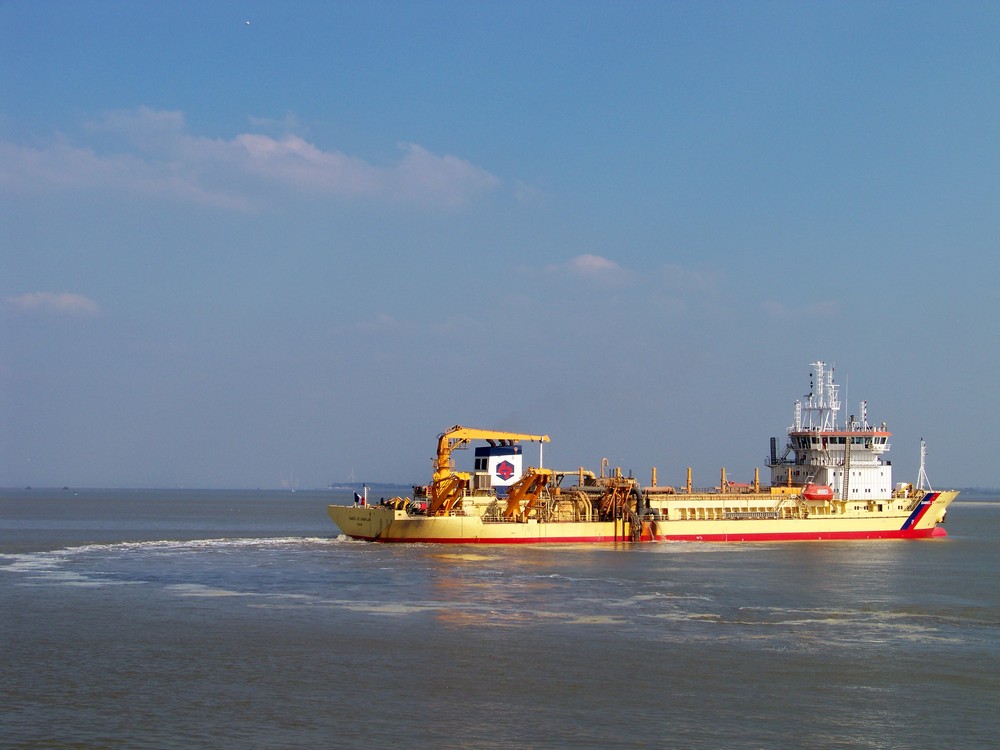Damen Shiprepair Dunkerque (DSDu) has begun work to convert the trailing suction hopper dredger (TSHD) Samuel de Champlain from diesel-electric propulsion to dual-fuel capability combining MGO and LNG. This is the first such conversion undertaken by DSDu, the first dual-fuel vessel in the GIE Dragages-Ports fleet, and the first vessel of its kind in Europe
A ceremony was held at the yard to mark the first cutting of steel for the prefabrication of a new section of hull that will hold the new generators and other equipment. In attendance at the event were Jean-Pierre Guellec, CEO of GIE Dragages-Ports, the owner of the vessel, Stéphane Raison, Président Directeur Général of Grand Port Maritime Dunkerque, and Eric Sorel, Commandant de Port, with representatives of Damen Shiprepair Dunkerque (DSDu) and the Samuel de Champlain project team.
Under the contract, Damen is delivering a turnkey package that includes engineering, procurement and support. Engineering studies are being subcontracted to LMG MARIN FRANCE. The current propulsion system of the Samuel de Champlain is diesel-electric burning MGO, and so the package includes the change of generators to dual-fuel models and the installation of onboard LNG storage facilities. The new engines will be installed on a new block which is currently being prefabricated in DSDu’s workshop.
Samuel de Champlain was built in 2002 and is the largest vessel in the GIE Dragages-Ports fleet. The vessel is based in the Grand Maritime Port of Nantes-Saint-Nazaire and works between the Loire and Seine estuaries.
The conversion is part of an EU-supported initiative to promote LNG propulsion in short-sea vessels operating along the European Atlantic coast and is being made possible by a subsidy from the European Commission’s Innovation and Networks Executive Agency (INEA) via its Connecting Europe Facility program.




